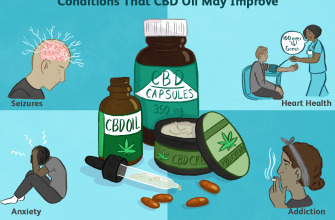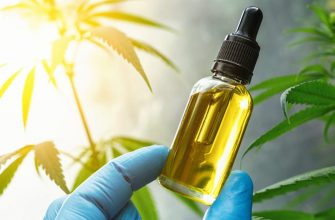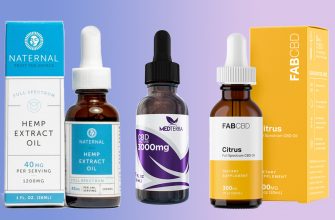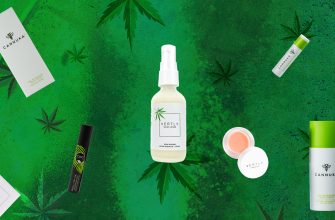Introduction to CBD
Cannabidiol (CBD) is a natural compound found in the resinous flower of the cannabis plant, a plant with a rich history as a medicine dating back thousands of years. Today, the therapeutic properties of CBD are being tested and validated by scientists and doctors around the world. A safe, non-addictive substance, CBD is one of over a hundred “phytocannabinoids” that are unique to cannabis and endow the plant with its robust therapeutic profile.
CBD is closely related to another important medicinal phytocannabinoid: tetrahydrocannabinol (THC), a compound that induces the euphoric and uplifting states that cannabis is famous for. These are the two components of cannabis that have been the most studied by scientists.
Both CBD and THC have significant therapeutic properties. But unlike THC, CBD does not make a person feel high or intoxicated. This is because CBD and THC act differently on different receptors in the brain and body.
CBD may actually reduce or neutralize the psychoactive effects of THC, depending on how much of each compound is consumed. Many people want the health benefits of cannabis without getting high—or with less. to try this component for the first time.
CBD: a multifunctional molecule
Many people are looking for alternatives to pharmaceuticals with harsh side effects – medicine is more in sync with natural processes. By tapping into how we biologically function at a deep level, CBD can provide relief from chronic pain, anxiety, inflammation, depression, and many other conditions.
Extensive scientific research – much of which is sponsored by the US government – and a growing number of anecdotal reports from patients and doctors highlight the potential of CBD as a treatment for a wide range of conditions, including (but not limited to):
- Autoimmune diseases (inflammation, rheumatoid arthritis)
- Neurological diseases (Alzheimer’s disease, dementia, Parkinson’s disease, multiple sclerosis, epilepsy, Huntington’s chorea, stroke, traumatic brain injury)
- Metabolic syndrome (diabetes, obesity)
- Psychoneurological diseases (autism, ADHD, PTSD, alcoholism)
- Bowel disorders (colitis, Crohn’s disease)
- Cardiovascular disorders (atherosclerosis, arrhythmia)
- Skin diseases (acne, dermatitis, psoriasis)
CBD has proven neuroprotective effects, and its anti-cancer properties are being studied at several academic research centers in the United States and other countries. A 2010 brain cancer study by California scientists found that CBD “enhances the inhibitory effect of THC on the proliferation and survival of human glioblastoma cells.” This means that CBD makes THC an even more powerful anticancer agent. Also in 2010, German researchers reported that CBD stimulates neurogenesis, the growth of new brain cells, in adult mammals.
How does CBD work?
CBD and THC interact with our bodies in a variety of ways. One of the main ways is to mimic and amplify the effects of compounds in our bodies called “endogenous cannabinoids” – so named because of their similarity to compounds found in the cannabis plant. These “endocannabinoids” are part of what scientists call the “endocannabinoid system.”
The discovery of the endocannabinoid system has greatly advanced our understanding of health and disease. This has serious implications for almost every field of medical science and helps explain how and why CBD and THC are such versatile compounds – and why cannabis is such a widely consumed plant despite its illegal status.
The endocannabinoid system plays a critical role in regulating a wide range of physiological processes that affect our daily experience – our mood, our energy levels, our intestinal stamina, immune activity, blood pressure, bone density, glucose metabolism, how we experience pain, stress , hunger and more.
What happens if the endocannabinoid system does not function properly? What are the consequences of a chronically deficient or overactive endocannabinoid system? In a word, disease.
Modern science has shown that the endocannabinoid system is disrupted in almost all pathological conditions. Thus, it makes sense that “modulating the activity of the endocannabinoid system may have therapeutic potential in almost all diseases that affect humans,” as Pal Pacher and George Kunos, scientists at the US National Institutes of Health (NIH), suggested in a publication of the year.
By modulating the endocannabinoid system and increasing endocannabinoid tone, CBD and THC can slow – or in some cases stop – disease progression.
Pharmaceutical CBD
There is a lot of excitement about the healing potential of CBD – and with good reason.
But it wasn’t until June 25, 2018 that the U.S. Food and Drug Administration (FDA) recognized cannabidiol as a drug, approving Epidiolex, a nearly pure pharmaceutical formula of CBD, as a treatment for two severe childhood seizure disorders, Lennox-Gastaut syndrome and Dravet syndrome.
It was the first time since the height of the reefer frenzy 80 years ago – when “marijuana” became a crime, not a cure – that the federal government gave an official thumbs up for a cannabis-derived product.
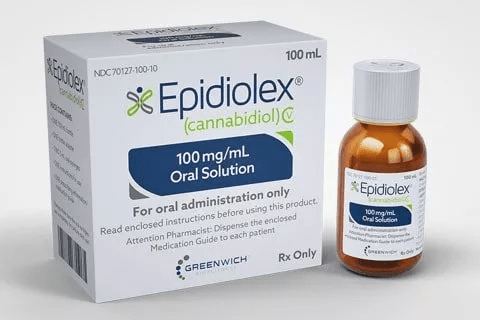
In response to the landmark decision, the FDA and the Drug Enforcement Administration (DEA) announced in September 2018 that it had removed Epidiolex from the Classification List, a category reserved for dangerous drugs with no medical value. From now on, Epidiolex will be considered a Schedule V drug, the least hazardous designation under the Controlled Substances Act. The DEA later “decommissioned” Epidiolex and removed it from the federal government’s list of controlled substances.
But the DEA kept cannabis and CBD (when they were derived from the cannabis plant with over 0.3% THC) on the list as an illegal drug. In the world, according to Uncle Sam, pharmaceutical CBD is officially the only good cannabinoid, while the rest of the plant remains an “evil” weed.
CBD oil
For those unable to obtain pharmaceutical CBD, there are numerous online retailers, public markets, coffee shops, health clubs, chiropractic offices, upscale boutiques, and gas stations that sell a variety of hemp CBD products, including pure CBD isolates that are comparable in chemical composition. with Epidiolex.
CBD oil products and flowers with varying levels of THC and CBD are also available for smoking or vaping at cannabis dispensaries in the States that have legalized the herb for therapeutic use.
In response to massive consumer demand, the huge unregulated market for CBD oil products reached critical mass in 2018. The surge in consumer interest in everything related to CBD has suddenly become news with postures of praise coming from athletes, movie stars, soccer players, moms and parents of desperately ill children.
CBD oil is touted as a remedy for the sick and a preventative for the healthy, a versatile palliative for pets and people of all ages.
But along with the growing awareness of cannabidiol as a potential health aide, misconceptions about CBD and cannabis therapy have also been rife.
CBD Challenge
CBD is a molecule, not a miracle. Many people could greatly benefit from legal access to a wide range of cannabis remedies, not just low or no THC products. CBD on its own may not always do the trick. There is strong evidence that CBD works best when combined with THC and the full spectrum of other cannabis components.
Figuring out how to optimize the therapeutic use of cannabis is the driving force behind the great laboratory experiment in democracy known as medical marijuana that has been unfolding in every state and country in recent years.
The advent of potent cannabis oil concentrates, non-toxic CBD-rich products, and innovative smoke-free delivery systems has changed the therapeutic landscape and reshaped the public conversation about cannabis.
It is no longer a matter of debating whether or not cannabis has merit as a herbal medicine – the key issue today is how to use cannabis for maximum therapeutic benefit. Given its low risk profile, many people use CBD as an add-on therapy to their existing treatment plans.
Unfortunately, most healthcare professionals know little about CBD or cannabis therapy and lack sufficient experience to adequately advise patients regarding dosage, routes of administration, CBD/THC synergy, and any risk factors, including drug interactions. Instead, the responsibility rests with a loose community of self-reliant patients, supportive families, and a few pioneering physicians who have learned a lot through trial and error and shared information on how to navigate the promising avenues of cannabis therapy.
What about CBD from hemp?
What started as a massive populist uprising against cannabis prohibition has turned into a multi-billion dollar market catalyzed by the re-discovery of CBD as a health option. CBD oil is red-hot these days, and it seems like everyone – benefactors and scalpers alike – wants to get in on the act.
CBD also catalysed the rebirth of the American hemp industry, which had been dormant for decades due to the politics of the war on drugs. The 2018 Farm Bill includes a provision that would legalize the cultivation of hemp (cannabis with no more than 0.3% THC), in large part due to the popularity and economic driving force of CBD.
Hemp cultivation is now a legal agricultural enterprise in the United States and Russia. But the extraction of rich CBD oil from hemp biomass and the marketing of CBD oil concentrates and isolates for ingestion and smoking are “treading on Big Pharma’s toes” and frowned upon by the DEA and FDA.
Legality aside, hemp cannabidiol is just a click away for those willing to roll the dice and buy CBD products that are made with little regulatory oversight. The upside of all this is the easy access to CBD oil, the downside is the inconsistent quality.
Many hemp-derived CBD oil products are mislabeled for cannabidiol and THC content. And poorly processed CBD oil can be contaminated with toxic solvent residues, pesticides, corn syrup, artificial flavors and colors, and other contaminants. Fortunately, high-quality CBD oil products are also available to the conscientious consumer – the label reader, the brand researcher – who understands that cannabis and CBD are best used as part of a healthy lifestyle.

